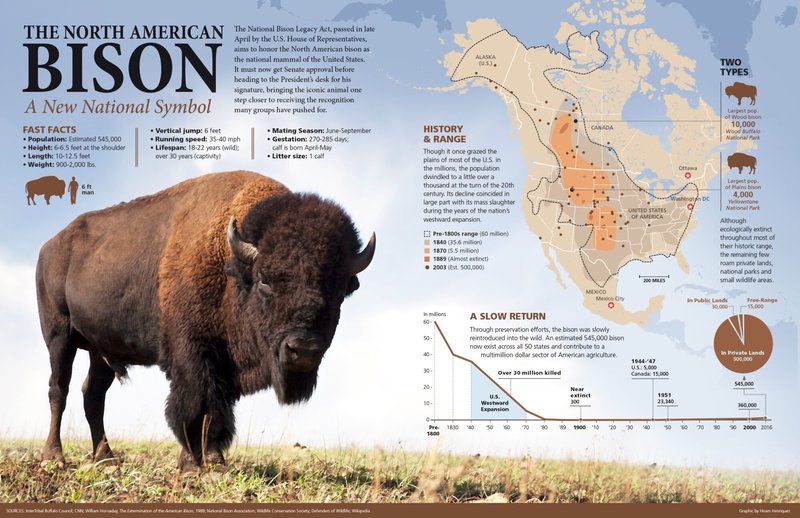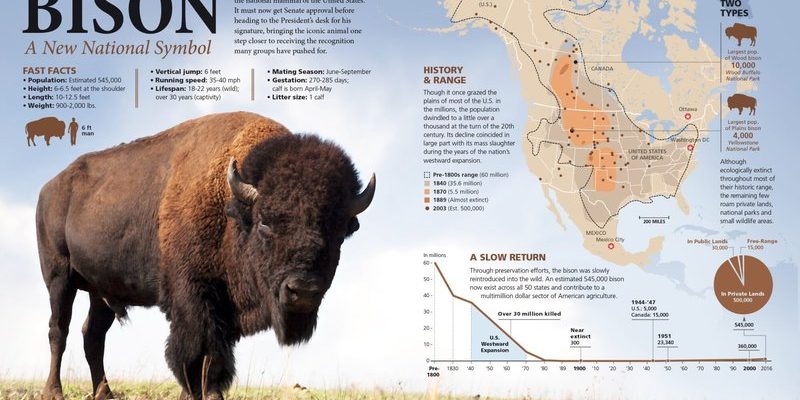
Let’s dive deeper into the habitats and distribution of bisons. Imagine you’re sitting across from a friend, sipping coffee, and they’re recounting the adventures of these great animals. Just like we have neighborhoods and favorite hangout spots, bisons have their own preferred environments that support their lifestyle and survival.
The Natural Habitat of Bisons
Bisons are quite adaptable and can be found in various habitats. Their primary natural habitat includes:
- Grasslands
- Savannas
- Woodlands
- Plains
In these environments, bisons roam in herds and feed on grasses, sedges, and other vegetation. Think of their habitat like a buffet spread just waiting for them to dig in! They prefer areas where they can graze freely and have enough space to roam. You might be wondering why grasslands are so vital for their survival. Well, grasslands not only provide food but also shelter from harsh weather conditions.
Adaptability to Climate
Here’s the thing: bisons are tough animals. They can thrive in both hot summers and frigid winters, which is quite remarkable. Their thick fur keeps them warm in the winter, while during the sizzling summer months, they shed this coat to stay cool. That ability to deal with different climates is a big reason why we see them in various parts of North America.
In the northern regions, like parts of Canada and Montana, bisons are often found in cooler habitats. Meanwhile, in southern areas, they prefer areas that provide some shade and water access. When considering their habitat, it’s clear that they’re not picky creatures; they just know what they need to survive.
Where Do Bisons Live Today?
Historically, bisons roamed across much of North America. From the East Coast to the Rocky Mountains, they had a vast range. However, due to hunting and habitat loss, their presence has dramatically shrunk. Today, you can primarily find bisons in specific protected areas and reserves, where they thrive under careful management.
Some of the notable places include:
- Yellowstone National Park: This is one of the most famous locations worldwide for viewing bisons. The park is home to a large herd, making it a popular destination for tourists.
- Custer State Park: Located in South Dakota, this park hosts one of the largest buffalo herds in the country. Visitors can often see them roaming the park freely.
- Badlands National Park: Also in South Dakota, this area offers amazing landscapes along with the chance to spot bisons.
These areas are like safe havens for bisons—places where they can live and reproduce without the threat of extinction.
Conservation Efforts
You might be wondering what’s being done to protect bisons and their habitats. Thankfully, there are numerous conservation efforts underway. Organizations and government bodies are working to expand protected areas and improve the overall health of bison populations.
These efforts include managing herd sizes, ensuring their diet is balanced, and creating awareness about their significance in ecosystems. Such proactive steps help prevent bisons from facing the same fate as some other species that have nearly disappeared.
Farming and Ranching: A New Home for Bisons?
Interestingly, bisons are not just found in the wild anymore. They’ve become popular in ranching. Many farms across North America now raise bisons for their meat, fur, and even for tourism. It’s a new twist for these animals that have spent centuries roaming free.
Ranchers provide environments that mimic their natural habitats to help bisons thrive. This way, they can maintain their health and behaviors, which is great for their well-being. Imagine a farm where bisons can roam large pastures just like they would in the wild; it’s a win-win for both animals and humans.
Understanding the Bison’s Role
Bisons play a critical role in their ecosystems. They help maintain the grasslands by eating grasses and trampling the soil, which encourages new plant growth. Their presence supports a wide range of other species, from insects to larger animals, making them vital to ecological stability. So when we think about where do bisons live, it’s not just about their current locations; it’s also about how their existence impacts the entire environment.
Challenges Facing Bison Populations
Though there are many positive stories about bison conservation, challenges still remain. Habitat loss due to urban development, agriculture, and climate change continues to threaten their populations.
For example, as cities expand, the natural grasslands where bisons thrive can be fragmented or destroyed, putting pressure on remaining herds. Climate change also affects their habitat by altering plant growth patterns and water availability. It’s a complex issue that requires ongoing attention and innovative solutions.
Community Involvement
Communities are becoming more aware of these challenges, and many are stepping up to help. Local initiatives often promote bison-friendly practices to encourage biodiversity. By supporting these efforts, people can play a part in ensuring that bisons continue to roam our landscapes for generations to come.
Final Thoughts on Bison Habitat and Distribution
Understanding where bisons live isn’t just about their physical homes; it’s about appreciating their role in our ecosystems and the challenges they face. From expansive grasslands to ranching farms, bisons continue to adapt and inspire us.
As you explore the places they inhabit, remember that their journey is intertwined with ours. Whether in national parks or local farms, bisons are a testament to nature’s resilience and a reminder of our shared responsibility for the environment. So next time you hear about bisons, think of the vast open spaces they call home and the stories they carry with them.

